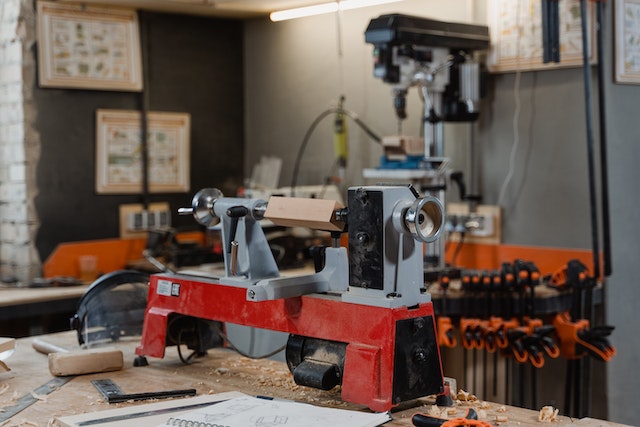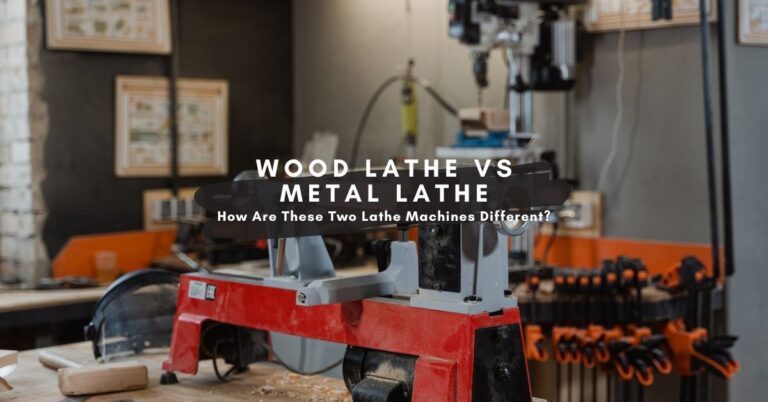Lathe vs Milling Machine: What’s the Difference?
Lathe vs Milling Machines Going in Detail:
Lathes and Milling Machines are two crucial that are extensively used in the manufacturing industry. Although both involve cutting tools to remove excess material from the workpiece, they are not the same. Before diving into the differences, let us know about these machines individually.
What’s Lathe?
A Lathe is comparatively a giant machine that resembles a generic workbench. The lathe consists of various parts like the bed, carriage, headstock, tailstock, stepper pully, and much more. It’s mainly designed to rotate workpieces against a segment of attached cutting tools; the cutting tools over here remain stationary, whereas the workpiece rotates against them to remove excess material.
A Lathe is either used for wood or metal cutting purposes and this totally depends on the material for which they are made to get rid of. The lathes used in woodwork are usually smaller in size, and due to this, they have comparatively fewer parts as opposed to the lathes that are used for metalwork. The one thing that brings both of them together is their reliability in the rotation of the mounted workpiece that has to get trimmed off of excess material while it is being exposed to a cutting tool.
What’s Milling Machine
A milling machine is essentially used to extract the material from the workpiece by means of feeding it against a multi-bladed or pointed cutting tool. Usually, the milling machines are taller than the lathes provided they have a shorter length so as to allow the ongoing manufacturing-oriented industrial companies to place them in a sophisticated amount of space.
Generically, a milling machine rotates a circular cutting tool that has its number of cutting edges matched and symmetrically aligned about its axis while the workpiece is held in an opposite direction which is then clamped to a table that could potentially be moved in three perpendicular directions.
Differences between a Lathe and a Milling Machine
The first and foremost difference between the two, which is very much evitable by virtue of naked eyes, is their size. The easiest way to distinguish between a lathe and a milling machine is their size with respect to their dimensions.
The lathe is smaller in size, whereas the milling machine is more significant. The milling machines are usually taller than the lathes, provided they have a shorter length so as to allow the ongoing manufacturing-oriented industrial companies to place them in a sophisticated amount of space.
Apart from the shape and size of these two devices, we can also see noticeable differences based on their work of operation. A lathe is a device wherein the workpiece is attached over a mounting surface and made to rotate about its axis. Their sides are equipped with cutting tools that cut right through the excess material while the workpiece is rotating.
A milling machine rotates a circular cutting tool that has its number of cutting edges matched and symmetrically aligned about its axis while the workpiece is held in an opposite direction which is then clamped to a table that could potentially be moved in three perpendicular directions.
So basically, in the case of lathes, the workpiece is rotating around the cutting tools, and in milling machines, it’s the exact opposite, with the cutting tools rotating about an axis and the workpiece being clamped at a stationary place.
We have so far discussed the significant differences. Let us get into the nuances of it. The cutting tools that are used in a lathe are single-bladed so as to allow maximum rotation of the workpiece, which allows for more delicate cutting of the excess material.
The cutting tools used in the milling machines are multi-bladed or even pointed sometimes. The reason for this is the multiple blades or points. It becomes much easier for the milling machines to grind away the excess material from the desired workpiece.
The milling processes can be divided into two subcategories: face or peripheral. Face milling is signalized by a cutting action around the outsides of the cutting tool, whereas the peripheral emphasizes cutting right across the circumference of the cutting tool. A Lathe is either used for wood or metal cutting purposes, and this totally depends on the material for which they are made to get rid of.
The lathes used in woodwork are usually smaller in size, and due to this, they have comparatively fewer parts as opposed to the lathes that are used for metalwork. The one thing that brings both of them together is their reliability in the rotation of the mounted workpiece that has to get trimmed off of excess material while it is being exposed to a cutting tool.
Being able to gain this level of insight, we clearly know that lathes and milling machines are used to remove material from a workpiece. So, this brings us to the last difference between a lathe and a milling machine.
A lathe uses single-bladed cutting tools, whereas a milling machine makes use of multiple-bladed or pointed cutting tools. A Lathe is comparatively a larger machine that resembles a generic workbench.
The lathe consists of various parts like the bed, carriage, headstock, tailstock, stepper pully, and much more. It’s mainly designed to rotate workpieces against a segment of attached cutting tools, and the cutting tools over here remain stationary; in contrast, the workpiece rotates against them to remove excess material.
A milling machine is essentially used to extract the material from the workpiece by means of feeding it against a multi-bladed or pointed cutting tool.
Usually, the milling machines are taller than the lathes, provided they have a shorter length so as to allow the ongoing manufacturing-oriented industrial companies to place them in a sophisticated amount of space.
Differences in Operations: Lathe Machines vs Milling Machines
Lathe Machine
| Turning |
| Thread cutting |
| Facing |
| Boring |
| Drilling |
| Reaming |
| Sanding |
| Cutting |
Milling Machine
| Facing |
| Side milling |
| Plain milling |
| Milling grooves |
| Threading |
| Straddle Milling |
| Form Milling |
| Helical Milling |
Differences in Type of Machinery:
Now let’s discuss how Milling machines and Lathe machines are different in terms of machinery.
Milling Machine
| Horizontal Milling Machine |
| Vertical Milling Machine |
| Knee-type Milling Machine |
| Bed type Milling Machine |
| CNC Milling Machine |
Lathe
| Wood Lathe |
| Engine Lathe |
| Capstan and Turret Lathe |
| Wheel Lathe |
| Bench type Jewellers Lathe |
Differences in Cutting Tools
Lathe
| The primary tool used in a lathe is popularly called an insert cutter. |
| It has a tip that can be removed. |
Milling Machine
| Insert cutter in milling machines is not a common feature. An end mill is the most popular option. |
| It can be operated at a different speed. |
Final Conclusion
Lathe and milling machines both are extensively used in the manufacturing process, keeping their differences they are beneficial for different types of tasks and workpieces. As we have discussed the several differences in the above article, it would be easier to find its right purpose by its reference.
Hi, my name is Charles Winn, A DIY enthusiast, Mechanical Engineer. I was born and raised in Springfield, Missouri. I am also a father of two troublemaker kids, a terrible photographer, and I love to play chess.








